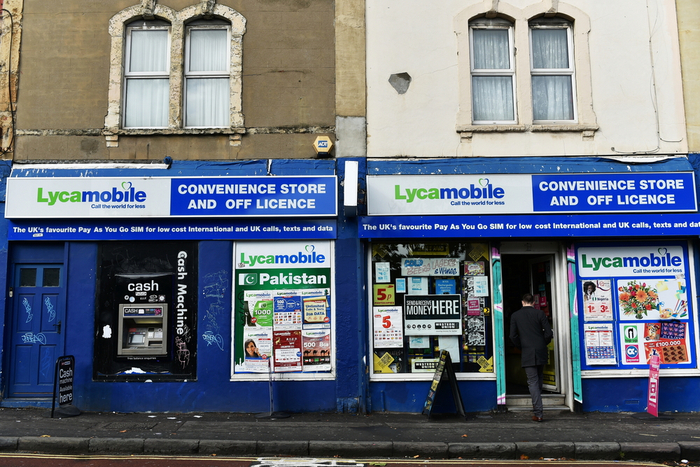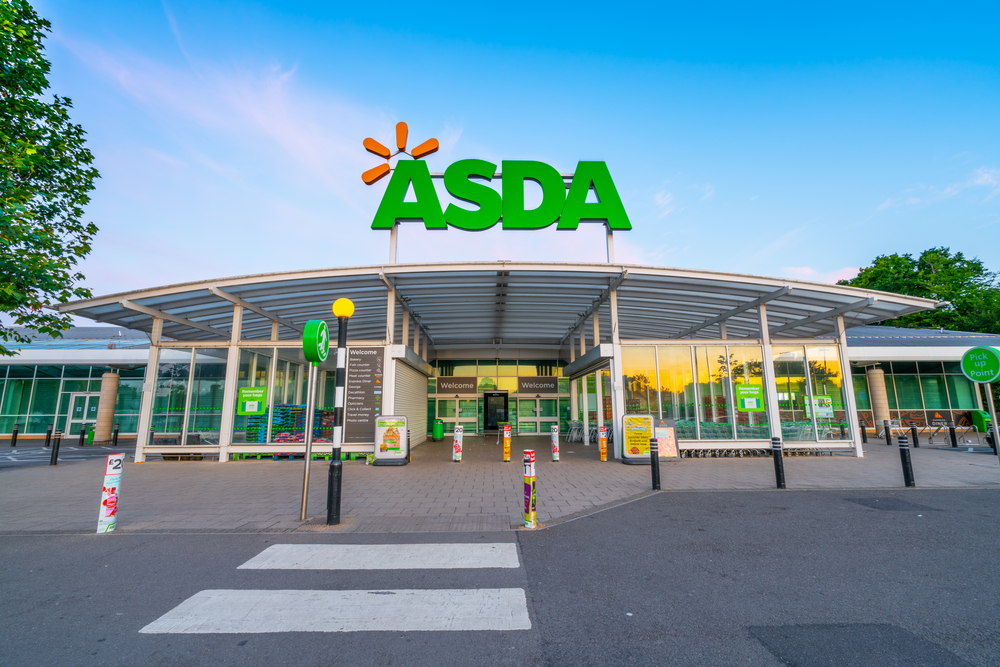At a time when supermarkets and high street retailers fight tooth and nail for market share, the convenience store sector is holding its own.
Convenience stores have long provided efficiency for customers, with convenience being in the name – both in location and what they offer. They tend to be small retail businesses which stock everyday items which the average person uses, such as snack foods, toiletries or tobacco products. If shoppers require a couple of items that doesn’t justify a trip to the big grocer in the town centre, then a trip to the convenience store up the road often makes more sense.
And in an age when the Covid-19 pandemic led to Brits avoiding crowded places, convenience stores have further triumphed against their bigger supermarket rivals within the wider grocery sector.
Although the prices at a convenience store tend to be a little higher, customers spend less to get there, which creates a pricing balance. Customers also spend less time inside convenience stores, which is what consumers have sought during the pandemic – especially when under lockdown.

The share of non-affiliated independent convenience stores in the UK accounted for 40 per cent of market share last year, while co-operatives represented only seven per cent, according to a 2020 report by Statista.
Even though it is often reported that the high street is in decline – or at least evolving – thanks to the growth of online shopping, there are several reasons why the convenience sector is one that remains in high demand.
Despite the uncertainty, they provide a useful local stopgap for people to purchase items they need as they progress throughout the week – sometimes even offering Post Office services in store too.
There are many national operators in the UK, such as the Co-op, McColl’s, Waitrose, M&S Food, Tesco, Sainsburys and Spar, which each have convenience store formats and stock a wide range of products. In recent times, major supermarkets such as Asda and Iceland expressed interest in venturing out into similar, or smaller store formats.
Iceland officially opened the doors to its new convenience format under the Swift fascia in mid-March with a trial store at the former Iceland Four Lane Ends site in Benton, Newcastle upon Tyne. The frozen food retailer said Swift was an entirely new concept designed to provide an easy-to-shop grocery store with the watchwords “Fast. Fresh. Local”.

Earlier in March, reports emerged that Asda’s new billionaire owners the Issa brothers had been brainstorming ways on how they can utilise the Big 4 grocer’s shop floor space, and were working up plans to shrink retailing space dedicated to groceries by about a quarter, to make way for cafés, takeaways, and nail and beauty bars.
Even gardening retailer Dobbies launched the second site of its brand new Little Dobbies format store in Bristol in late March as it further ventured into the convenience sector. Unlike Dobbies’ larger garden centres, Little Dobbies’ core offering is horticulturally-focused, with a curated range of convenience gardening products ideal for those in urban areas and with a compact gardening space.
Despite established retailers dipping their toes into convenience store formats, Brits are arguably choosing to support their independent and local retailers rather than established chains.
In fact, recent research by Barclaycard Payments recently found that almost two thirds of Brits have been shopping locally in the last 12 months. This growing trend is set to outlive the pandemic, with 91 per cent saying they will continue shopping locally to support smaller and independent retailers even after all restrictions end.
Barclaycard Payments’s research also suggested an increased amount of support for local and independent retailers, with 64 per cent of Brits choosing to shop closer to home. Moreover, shoppers spent an extra 63.3 per cent in February at food and drink specialist retailers, such as butchers, bakeries and greengrocers – all of which tend to be small or independent businesses catering to local communities.
Although the pandemic has led to the temporary closure of non-essential retail due to lockdowns and tiered restrictions, this has arguably been a silver lining for the convenience market as stores remained open.
On the flipside, the pandemic has added caused havoc for high streets up and down the country, with the permanent closures of well-established retailers such as Debenhams and Oasis and Warehouse, as well as the break-up of Sir Philip Green’s Arcadia Group. More recently, John Lewis announced plans to shut eight stores, affecting 1465 staff – which would be a “hammer blow” to local retailers, according to Sheffield Heeley Labour MP Louise Haigh.
“The convenience market has changed beyond recognition over the past 20 years”
Arguably, the closures of stalwart retailers demonstrates a shift in consumers’ shopping habits, but this may also create a knock-on effect for the convenience market. This is because closures of beloved retailers may deter consumers from visiting town centres where they may also pop into convenience stores upon their visit.
According to a 2020 report by market research firm Mintel, the peak in convenience store demand will not continue this year, with a 3.9 per cent decline expected for the market.
Despite the cynical outlook, convenience stores are still performing well. McColl’s saw its revenue rise by 2.3 per cent to £1.25 billion in the year to November 29, thanks to strong demand throughout the pandemic. In fact, the retailer believes the “fundamental shift” in consumer behaviour throughout the pandemic is expected to be permanent.
“More customers will work from home. More customers will be doing top-up shops and seeking meal solutions from local convenience stores, which will all help to sustain the shift to local shopping,” a McColl’s spokesperson told Retail Gazette.
McColl’s also extended its wholesale partnership with Big 4 grocer Morrisons as part of an agreement to convert more of its stores to the Morrisons Daily format. McColl’s added that its strong performance last year was delivered through the Morrisons Daily format.
“We’re delighted to offer our customers a wide range of Safeway goods across our McColl’s branded stores and Morrisons own-label produce in our Morrisons Daily branded stores,” the McColl’s spokesperson said.
“Significantly, the convenience market has changed beyond recognition over the past 20 years as customer habits have changed.
“Convenience is now increasingly about selling supermarket-quality fresh and chilled food, which is why – through our supply relationship with Morrisons.
“The convenience market had been growing robustly prior to the pandemic, and the impact of Covid-19 on societal trends has served to reinforce that growth, with convenience now accounting for a 22 per cent share of the UK retail grocery market.
“Furthermore, customers have become increasingly used to shopping convenience stores online.
“We see this online last mile delivery as an incremental growth opportunity, which is why we struck a partnership with Uber Eats last year to offer home delivery from over 400 of our stores.
“What is clear is the importance of our stores to local communities has never been greater. We outperformed the convenience market last year and a key focus for us going forward is to ensure we retain as many of the new customers we’ve won by bringing together the best of our convenience expertise and Morrisons’ fresh food credentials.”

Mark Dodds, chair of food, drink and agriculture at the Chartered Institute of Marketing, said one of the biggest pros to retailers launching convenience formats is that they can “capture the consumers pound rather than it going elsewhere”.
“Brand recognition will certainly help and in many cases, retailers may see their income simply spread between the larger stores and the convenience channel,” he said.
However, Dodds argued that this could create a “bigger headache in terms of logistics and getting products on many more shelves than before”, but retailers that invest in technology would see this transition made somewhat easier.
Dan Sweeney, partner at UK law firm TLT, said convenience formats have been a competitive marketplace for some time with established players such as Tesco, Sainsbury’s and Co-op competing for sites.
“Movement in this arena will be particularly key as Amazon trials its new grocery proposal amidst rumours of a largescale roll-out in the UK,” he told Retail Gazette.
“The acquisition of Asda by EG Group is also hugely significant. As an operator with massive experience generating convenience and food and beverage sales from roadside locations, they will have a natural opportunity to synergise with the product offering and real estate portfolio of a major grocery chain – in a potentially different way to their previous commercial tie-ups with Spar and Sainsbury’s.
“Dobbies’ pivot to a different type of store footprint will also be worth tracking – perhaps in a similar way to Ikea moving into high street locations.
“If Covid influences working patterns and city centre mobility in the way that some commentators have suggested, then there a number of themes to watch out for. A return to local high streets could pave the way for convenience offerings by other established operators in these locations.”
As changing shopper habits and the pandemic have altered the UK retail landscape, the function of convenience stores has expanded beyond just a quick stop for a newspaper and bottled beverages or snacks. By evolving to offer a diverse range of products and services, convenience stores have become a viable alternative for consumers to purchase essential everyday items.
Consumers nowadays may be increasingly surprised to find such a range on offer at their local corner shop, but it could be a taste of things to come. Local entrepreneurs are continuing to step up their fight against the encroachment of Tesco, Sainsbury’s, Waitrose and M&S into a market once dominated by independents. Creativity is one of their best weapons.
Click here to sign up to Retail Gazette‘s free daily email newsletter


















